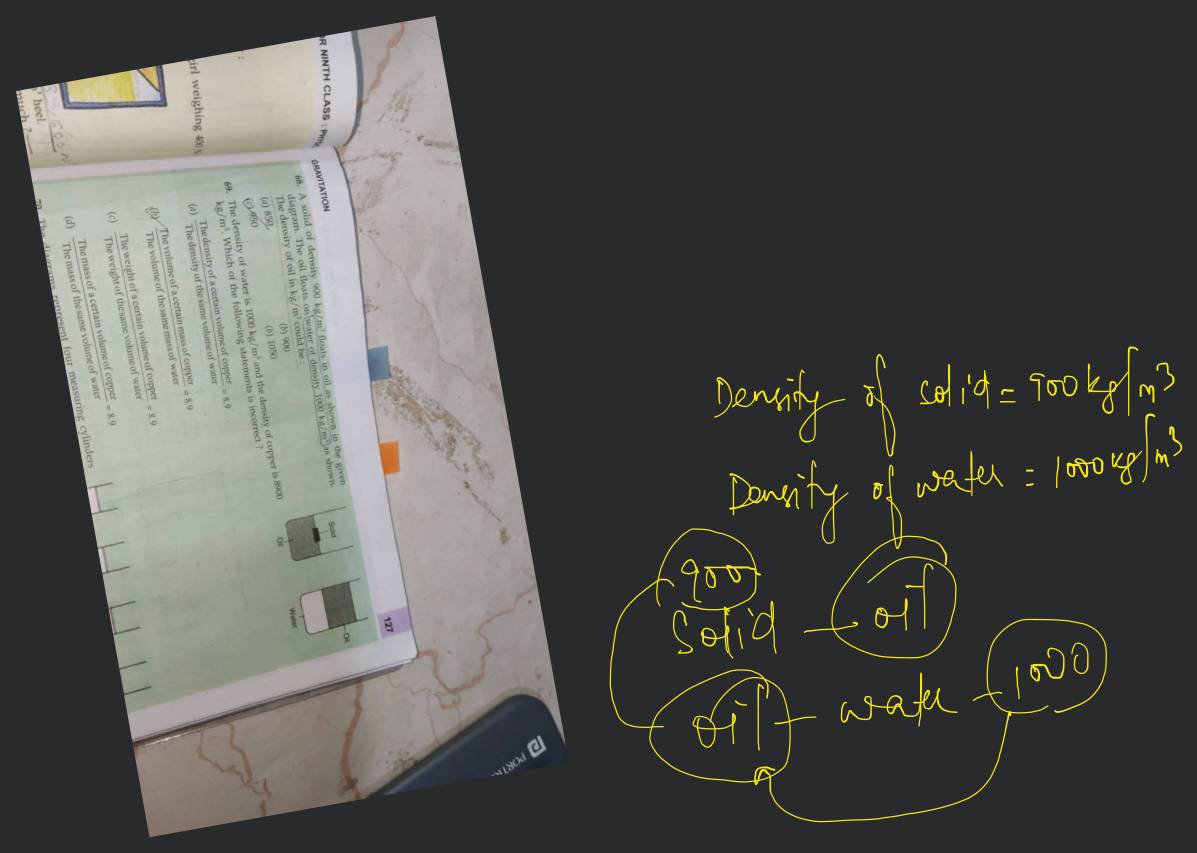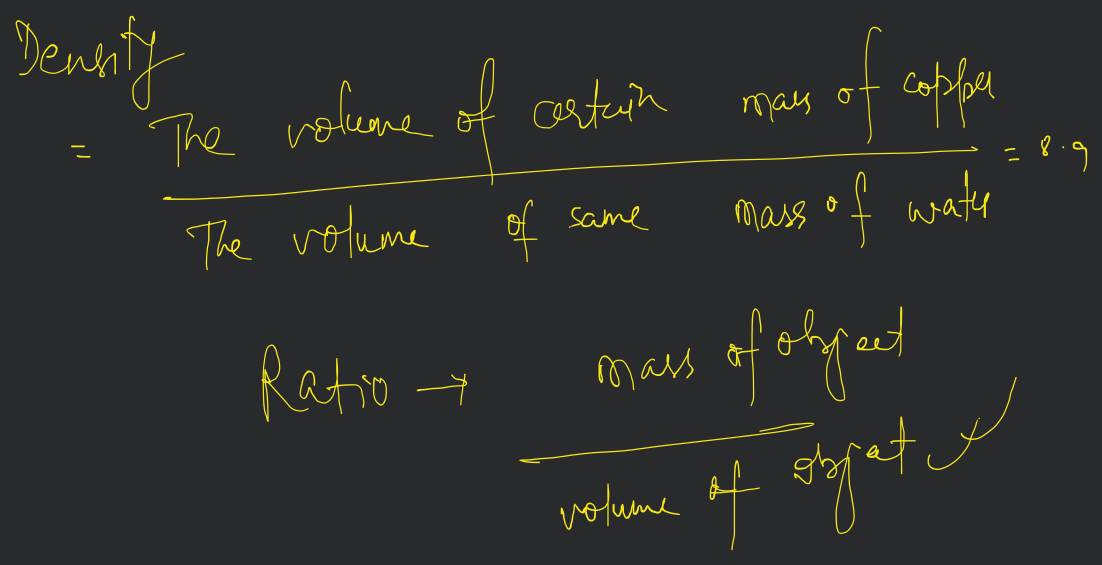Question
Question 69:
The density of water is 1000 kg/m3 and the density of copper is 8900 kg/m3. Which of the following statements is incorrect?
(a)
(b)
(c)
(d)
Found 6 tutors discussing this question
Discuss this question LIVE
14 mins ago
 Text solution
Text solution Verified
Verified
Answer:
Ans: b.
This is because the density is defined as the ratio of the mass of the object to the volume of the object.
This is because the density is defined as the ratio of the mass of the object to the volume of the object.
Was this solution helpful?
17
Share
Report

One destination to cover all your homework and assignment needs
Learn Practice Revision Succeed

Instant 1:1 help, 24x7
60, 000+ Expert tutors

Textbook solutions
Big idea maths, McGraw-Hill Education etc

Essay review
Get expert feedback on your essay

Schedule classes
High dosage tutoring from Dedicated 3 experts
Practice more questions from Physics (Lakhmir Singh)
Q1
Question 67:
The relative densities of four liquids P, Q, R and S are 1.26, 1.0, 0.84 and 13.6 respectively. An object is floated in all these liquids, one by one. In which liquid the object will float with its maximum volume submerged under the liquid?
(a) P
(b) Q
(c) R
(d) S
(a) P
(b) Q
(c) R
(d) S
Q2
Question 69:
The density of water is 1000 kg/m3 and the density of copper is 8900 kg/m3. Which of the following statements is incorrect?
(a)
(b)
(c)
(d)
(a)
(b)
(c)
(d)
Q3
Question 70:
The diagrams represent four measuring cylinders containing liquids. The mass and volume of the liquid in each cylinder are stated. Which two measuring cylinder could contain an identical liquid?
Figure
(a) W and X
(b) W and Y
(c) X and Y
(d) X and Z
View allFigure
(a) W and X
(b) W and Y
(c) X and Y
(d) X and Z
Practice questions from Physics (Lakhmir Singh)
Question 1
Views: 5,408
Question 2
Views: 5,262
(b) During a free fall, will heavier objects accelerate more than lighter ones?
Question 3
Views: 5,123
Question 4
Views: 5,114
Practice more questions from Gravitation
Practice questions on similar concepts asked by Filo students
Question 1
Views: 5,172
Question 2
Views: 5,804
Question 3
Views: 5,109
Question 4
Views: 5,517


Stuck on the question or explanation?
Connect with our Science tutors online and get step by step solution of this question.
231 students are taking LIVE classes
| Question Text | Question 69:
The density of water is 1000 kg/m3 and the density of copper is 8900 kg/m3. Which of the following statements is incorrect? (a) (b) (c) (d) |
| Updated On | Jan 19, 2023 |
| Topic | Gravitation |
| Subject | Science |
| Class | Class 9 |
| Answer Type | Text solution:1 Video solution: 1 |
| Upvotes | 86 |
| Avg. Video Duration | 7 min |






